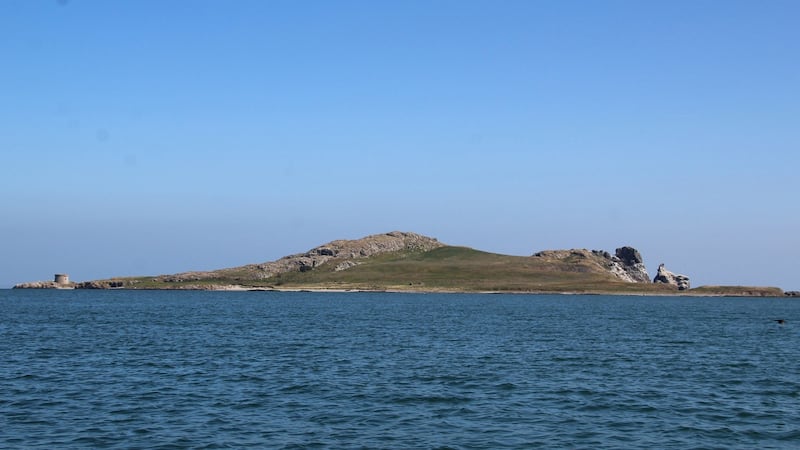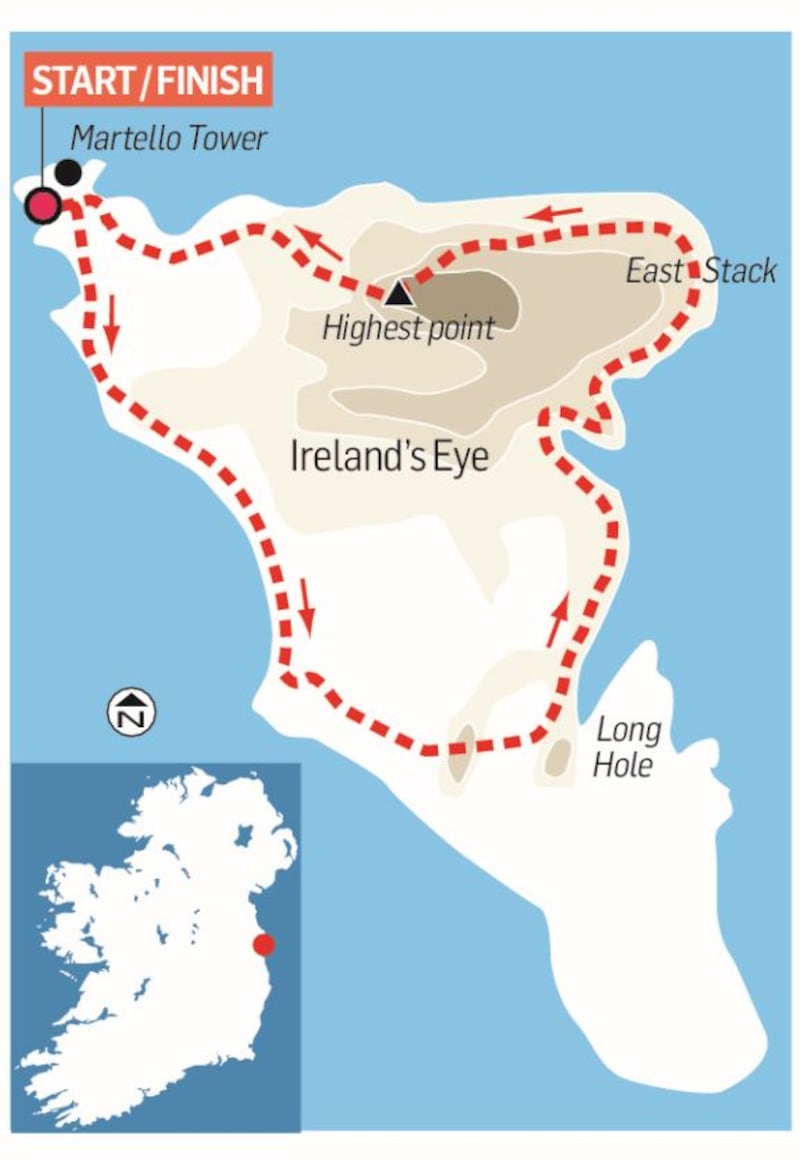A little over a mile, by sea, from Howth Harbour in Co Dublin, you can find a glorious summertime walk through the wilderness of craggy Ireland's Eye, an offshore island that, although only 13km from Dublin's GPO, goes unnoticed by most.
The ferry drops you on the rocky shore of the island near a Martello tower. The city is left behind, and although the shores of greater Dublin are visible in the distance, the boat trip, the susurration of the waves on the beach and the calls of the seabirds leave you in no doubt that you have escaped the urban world.
Leaving the anchorage and the little beach beside it, head southeast across grass and bracken to reach the main beach. In spring and early summer, one has to watch out for the rudimentary nests of blackback gulls, complete with their clutch of two or three speckled eggs. In general, take care to avoid any signs of birds nesting. On the shoreline, colourful shelducks and oystercatchers forage in the seaweed, ignoring a comical scarecrow that has been erected at the back of the beach. Offshore, great black cormorants fly swiftly past, skimming the waves.
Sensational trial
Make your way along the beach to the rocks at the end and then turn left and up into the bracken, continuing east until you reach a deep cleft in the rocks, beyond which the dramatic sea stack at the eastern end of the island is in view, streaked with the guano of Ireland's Eye gannet colony. The cleft is called the Long Hole, and is where the body of Mrs Maria Kirwin was found in September 1852. She and her husband, William, an accomplished painter, had been visiting the island, and he was charged with her murder. After a sensational trial during which it was revealed that Kirwin had another wife, with seven children, the jury found him guilty, and he spent 27 years penal servitude on another island: Spike Island in Cork Harbour.

There are seabirds all round now, and if it is the nesting season take care to avoid nests. Follow the cliffs as they meander northwards, ascending towards the eastern promontory with its dramatic stack, and keep an eye out, on your way, down to the left, for the stone gables of an old church, rising from a sea of bracken. This is the much restored eight-century Church of the Three Sons of Nessan.
Gannet colony
The precarious ledges of the rocky cliffs and sea stack at the northeast corner of the island are home to Ireland’s newest gannet colony, as well as hundreds of auks and cormorants, and there are a number of perfect picnic places where you can sit and watch them come and go. The gannet, brilliant white with black wing-tips, is a magnificent bird with a wing span of up to two metres, and they catch fish by diving from a height into the sea at 100 km per hour.
Now head west and climb to the highest point of the island, scrambling up the last few metres. It’s well worth it: the 360 degree view from here is magnificent. Below, on the cliffs, many hundreds of razorbills and guillemots are densely packed on their nests; puffins also nest on the north side of the island, but their burrows are in steep grassy banks, and great care has to be taken to get a sighting.
Descend carefully now, westwards, towards the Martello Tower. It was built in the early 19th century to guard against a French invasion on to the sands of Portmarnock, and two more can be found at Howth. It is in remarkably good condition after 200 years, probably because of its isolation. From its door, four metres from ground level, a rope hangs down that allows able-bodied youngsters to gain access.

Getting there: The Ireland's Eye Ferry operates from the end of the east pier of Howth Harbour. Web: www.irelandseyeferries.com
Suitability: Although only about 2.5km, this walk is rugged in places with rocky and grassy paths, sometimes overgrown, so even if the weather is warm shorts are not recommended. It is a place of exposed cliffs, so care is needed.
Time: Who would want to rush this: take a leisurely couple of hours.
Ascent: about 80 m
Map: OS Discovery 50










